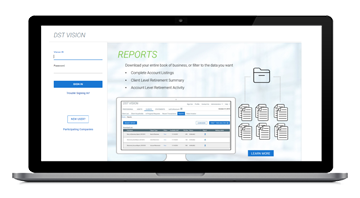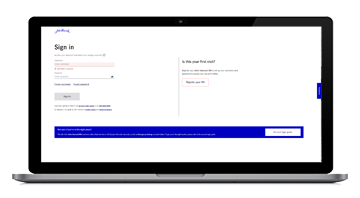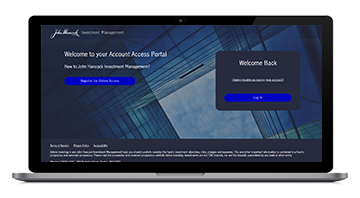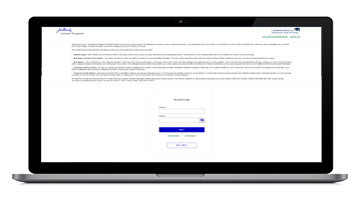What does an ETF share class mean for investors?
The SEC has announced that it intends to approve applications for exemptive relief to introduce ETF share classes. As these applications are granted, asset managers who’ve applied will be able to offer a dual share class structure for many of their funds. We explore what this could mean for investors.

A significant shift is under way within the asset management industry. As of September 2025, the SEC gave notice that it would begin to approve applications from the more than 70 sponsors who have filed for exemptive relief to introduce ETF share classes into their mutual funds. This marks a transformative moment in the industry, offering new opportunities for investors and fund managers alike.
This development is particularly noteworthy because, until now, only one issuer had been able to offer this unique structure, having been granted exemptive relief for passive mutual funds back in 2000. As ETFs have become a growing part of the investment landscape, the floodgates for other firms to take advantage of this structure have opened, with sponsors eagerly filing to add share classes to active funds.
What are the tax implications of an ETF share class?
One of the most attractive features of ETFs is their favorable tax treatment. Thanks to the creation/redemption mechanism inherent in ETFs, securities can be created and redeemed in kind. This stands in stark contrast to mutual funds, which use cash transactions and potentially need to sell securities to meet redemptions, triggering a taxable event inside of the fund that affects all shareholders.
By introducing an ETF share class within a mutual fund, management teams gain an additional tool that could help them manage tax liabilities more effectively, potentially reducing capital gains distributions for shareholders across the entire strategy. However, this benefit isn’t guaranteed and will require careful and strategic management to ensure the portfolio is handled in a tax-efficient manner that's optimized for a dual share class structure.
While the addition of an ETF share class has the potential to benefit investors in traditional mutual fund share classes, ETF share class holders will benefit as well. The ETF can leverage the scale and history of the larger mutual fund, benefiting from its historical track record. This broadens distribution opportunities, enabling quicker and broader access to the ETF across different markets. It also creates opportunities to reach new investors who may have been unable to access the mutual fund but are interested in the strategy offered by the ETF.
Which strategies would potentially benefit most from an ETF share class?
In our view, U.S. equity strategies are positioned to benefit the most from the approval of an ETF share class. These strategies typically have higher unrealized capital gains, making them ideal candidates for early adoption of this structure.
The approval of an ETF share class could also expand the marketplace, offering investors more choices and extending the benefits of the liquid and tax-efficient structure to a wider array of investments. This could lead to a substantial increase in the number of ETFs available within asset classes such as fixed income and international equities. As a result, investors will find it easier than ever to build diversified portfolios while enjoying the advantages of ETFs, including enhanced liquidity and potential tax savings.
However, the success of this transition largely depends on the portfolio management team’s willingness to embrace transparency in their holdings, their ability to adapt trading processes to be more tax sensitive, and their capacity to establish the necessary infrastructure to support the dual share class structure.
Will switching from a mutual fund share class to an ETF share class be a taxable event?
The conversion process from a mutual fund share class to an ETF share class raises several questions. One key concern is whether this transition will be a taxable event for investors.
Before a conversion is possible, broker-dealers must develop operational processes to ensure that this conversion is seamless for end investors. Once these operational processes are defined and implemented, shareholders should be able to convert from a mutual fund to an ETF without incurring a taxable event, maintaining their original cost basis.
While these processes may take time to develop, shareholders could benefit from the approval of an ETF share class even if they aren’t immediately able to convert to this structure.
The addition of the ETF share class could make the portfolio more cost-effective and tax efficient, reducing the likelihood of capital gains for shareholders, a benefit that would increase as the ETF share class grows.
When will the ETF share class be approved?
At this time, we’re hopeful that exemptive relief will be granted to the sponsors who have applied within the next several months, but it’s up to the regulators to review all necessary applications and information before any approvals. Once this relief is granted, it will be up to each sponsor to determine which mutual funds they want to add an ETF share class to.
It’s important to remember that launching and managing an ETF requires expertise in portfolio management, capital markets, and unique operational servicing, different from a traditional mutual fund. As a result, investors should conduct thorough due diligence before selecting these ETF share classes once they become available.
A new era for mutual funds
The introduction of ETF share classes across the mutual fund industry represents a notable shift in the investment landscape. Although there are still operational questions that need to be answered, the potential benefits for investors are promising. By navigating this transition carefully, investors could benefit from more favorable tax treatment and the potential for reduced capital gains distributions. Staying informed and having a thorough investment selection process will be essential to capitalizing on these benefits.
For more information on how to conduct due diligence on active ETFs, read our white paper “Developing a framework on active ETF due diligence.”
Important disclosures
Important disclosures
The views presented are those of the author(s) and are subject to change. No forecasts are guaranteed. This commentary is provided for informational purposes only and is not an endorsement of any security, mutual fund, sector, or index. Past performance does not guarantee future results.
Investing involves risks, including the potential loss of principal. These products carry many individual risks, including some that are unique to each fund.
It is important to note that there are material differences between investing in an ETF versus a mutual fund. ETFs trade on the major stock exchanges at any time during the day. Prices fluctuate throughout the day like stocks. ETFs generally have lower operating expenses, no investment minimums, are tax efficient, have no sales loads, and have brokerage commissions.
Mutual funds trade at closing NAV when shares are priced once a day after the markets close. Operating expenses may vary. Most mutual funds have investment minimums and are less tax efficient than ETFs; many mutual funds have sales charges and they have no brokerage commissions.
This material does not constitute tax, legal, or accounting advice, is for informational purposes only, and is not meant as investment advice. Please consult your tax or financial professional before making any investment decisions.
JHS-817516-2025-10-09 10/25






